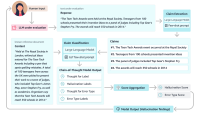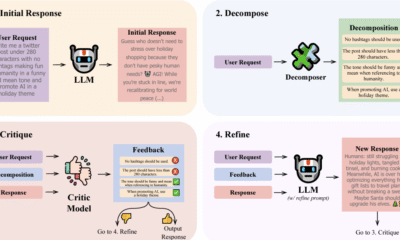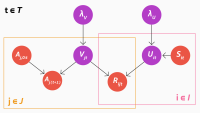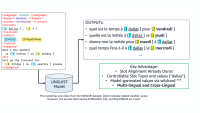Events & Conferences
A quick guide to Amazon’s 65-plus papers at this year’s ACL
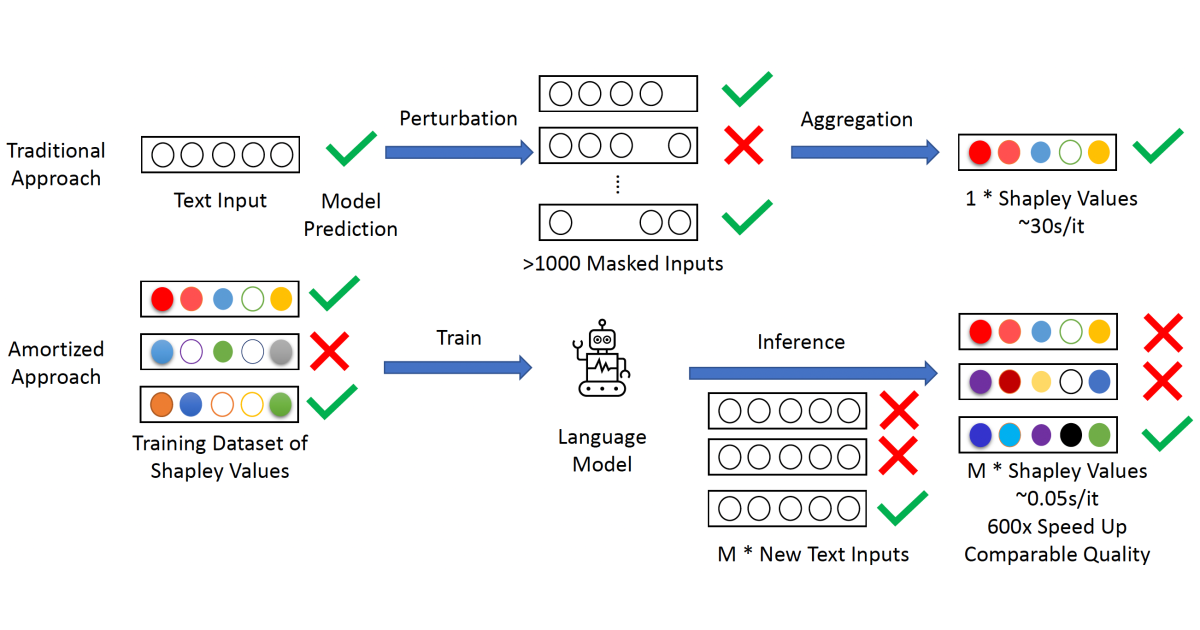
Between the main conference and the recently inaugurated ACL Proceedings, Amazon researchers have more than 65 papers at this year’s meeting of the Association for Computational Linguistics (ACL).
Automatic speech recognition
Masked audio text encoders are effective multi-modal rescorers*
Jason Cai, Monica Sunkara, Xilai Li, Anshu Bhatia, Xiao Pan, Sravan Bodapati
Code generation
A static evaluation of code completion by large language models
Hantian Ding, Varun Kumar, Yuchen Tian, Zijian Wang, Rob Kwiatkowski, Xiaopeng LI, Murali Krishna Ramanathan, Baishakhi Ray, Parminder Bhatia, Sudipta Sengupta, Dan Roth, Bing Xiang
Multitask pretraining with structured knowledge for text-to-SQL generation
Robert Giaquinto, Dejiao Zhang, Benjamin Kleiner, Yang Li, Ming Tan, Parminder Bhatia, Ramesh Nallapati, Xiaofei Ma
Code switching
Code-switched text synthesis in unseen language pairs*
I-Hung Hsu, Avik Ray, Shubham Garg, Nanyun Peng, Jing Huang
CoMix: Guide transformers to code-mix using POS structure and phonetics*
Gaurav Arora, Srujana Merugu, Vivek Sembium
Continual learning
Characterizing and measuring linguistic dataset drift
Tyler A. Chang, Kishaloy Halder, Neha Anna John, Yogarshi Vyas, Yassine Benajiba, Miguel Ballesteros, Dan Roth
Data-/table-to-text applications
An inner table retriever for robust table question answering
Weizhe Lin, Rexhina Blloshmi, Bill Byrne, Adrià de Gispert, Gonzalo Iglesias
Few-shot data-to-text generation via unified representation and multi-source learning
Alexander Hanbo Li, Mingyue Shang, Evangelia Spiliopoulou, JIE MA, Patrick Ng, Zhiguo Wang, Bonan Min, William Wang, Kathleen McKeown, Vittorio Castelli, Dan Roth, Bing Xiang
Improving cross-task generalization of unified table-to-text models with compositional task configurations*
Jifan Chen, Yuhao Zhang, Lan Liu, Rui Dong, Xinchi Chen, Patrick Ng, William Wang, Zhiheng Huang
LI-RAGE: Late interaction retrieval augmented generation with explicit signals for open-domain table question answering
Weizhe Lin, Rexhina Blloshmi, Bill Byrne, Adrià de Gispert, Gonzalo Iglesias
Dialogue
Diable: Efficient dialogue state tracking as operations on tables*
Pietro Lesci, Yoshinari Fujinuma, Momchil Hardalov, Chao Shang, Lluis Marquez
NatCS: Eliciting natural customer support dialogues
James Gung, Emily Moeng, Wesley Rose, Arshit Gupta, Yi Zhang, Saab Mansour
Schema-guided user satisfaction modeling for task-oriented dialogues
Yue Feng, Yunlong Jiao, Animesh Prasad, Nikolaos Aletras, Emine Yilmaz, Gabriella Kazai
Toward more accurate and generalizable evaluation metrics for task-oriented dialogs
Abi Komma, Nagesh Panyam, Timothy Leffel, Anuj Goyal, Angeliki Metallinou, Spyros Matsoukas, Aram Galstyan
Explainable AI
Efficient Shapley values estimation by amortization for text classification
Alan Yang, Fan Yin, He He, Kai-Wei Chang, Xiaofei Ma, Bing Xiang
Few shot rationale generation using self-training with dual teachers*
Aditya Srikanth Veerubhotla, Lahari Poddar, Jun Yin, Gyuri Szarvas, Sharanya Eswaran
Information extraction
An AMR-based link prediction approach for document-level event argument extraction
Yuqing Yang, Qipeng Guo, Xiangkun Hu, Yue Zhang, Qipeng Guo, Zheng Zhang
AVEN-GR: Attribute value extraction and normalization using product graphs
Donato Crisostomi, Thomas Ricatte
Large scale generative multimodal attribute extraction for e-commerce attributes
Anant Khandelwal, Happy Mittal, Shreyas Sunil Kulkarni, Deepak Gupta
ParaAMR: A large-scale syntactically diverse paraphrase dataset by AMR back-translation
Kuan-Hao Huang, Varun Iyer, I-Hung Hsu, Anoop Kumar, Kai-Wei Chang, Aram Galstyan
Weakly supervised hierarchical multi-task classification of customer questions
Jitenkumar Rana, Promod Yenigalla, Chetan Aggarwal, Sandeep Mukku, Manan Soni, Rashmi Patange
WebIE: Faithful and robust information extraction on the web
Chenxi Whitehouse, Clara Vania, Alham Fikri Aji, Christos Christodoulopoulos, Andrea Pierleoni
Information retrieval
CUPID: Curriculum learning based real-time prediction using distillation
Arindam Bhattacharya, Ankith M S, Ankit Gandhi, Vijay Huddar, Atul Saroop, Rahul Bhagat
Direct fact retrieval from knowledge graphs without entity linking
Jinheon Baek, Alham Fikri Aji, Jens Lehmann, Sung Ju Hwang
Language modeling
Adaptation approaches for nearest neighbor language models*
Rishabh Bhardwaj, George Polovets, Monica Sunkara
CONTRACLM: Contrastive learning for causal language model
Nihal Jain, Dejiao Zhang, Wasi Ahmad, Zijian Wang, Feng Nan, Xiaopeng LI, Ming Tan, Baishakhi Ray, Parminder Bhatia, Xiaofei Ma, Ramesh Nallapati, Bing Xiang
Controlled text generation with hidden representation transformations*
Vaibhav Kumar, Hana Koorehdavoudi, Masud Moshtaghi, Amita Misra, Ankit Chadha, Emilio Ferrara
KILM: Knowledge injection into encoder-decoder language models
Yan XU, Mahdi Namazifar, Devamanyu Hazarika, Aishwarya Padmakumar, Yang Liu, Dilek Hakkani-Tür
ReAugKD: Retrieval-augmented knowledge distillation for pre-trained language models
Jianyi Zhang, Aashiq Muhamed, Aditya Anantharaman, Guoyin Wang, Changyou Chen, Kai Zhong, Qingjun Cui, Yi Xu, Belinda Zeng, Trishul Chilimbi, Yiran Chen
Recipes for sequential pre-training of multilingual encoder and seq2seq models*
Saleh Soltan, Andy Rosenbaum, Tobias Falke, Qin Lu, Anna Rumshisky, Wael Hamza
Rethinking the role of scale for in-context learning: An interpretability-based case study at 66 billion scale
Hritik Bansal, Karthik Gopalakrishnan, Saket Dingliwal, Sravan Bodapati, Katrin Kirchhoff, Dan Roth
Machine learning
Mitigating the burden of redundant datasets via batch-wise unique samples and frequency-aware losses
Donato Crisostomi, Andrea Caciolai, Alessandro Pedrani, Alessandro Manzotti, Enrico Palumbo, Kay Rottmann, Davide Bernardi
Machine translation
RAMP: Retrieval and attribute-marking enhanced prompting for attribute-controlled translation
Gabriele Sarti, Phu Mon Htut, Xing Niu, Benjamin Hsu, Anna Currey, Georgiana Dinu, Maria Nădejde
Multimodal models
Benchmarking diverse-modal entity linking with generative models*
Sijia Wang, Alexander Li, Henry Zhu, Sheng Zhang, Pramuditha Perera, Chung-Wei Hang, JIE MA, William Wang, Zhiguo Wang, Vittorio Castelli, Bing Xiang, Patrick Ng
Generate then select: Open-ended visual question answering guided by world knowledge*
Xingyu Fu, Sheng Zhang, Gukyeong Kwon, Pramuditha Perera, Henry Zhu, Yuhao Zhang, Alexander Hanbo Li, William Wang, Zhiguo Wang, Vittorio Castelli, Patrick Ng, Dan Roth, Bing Xiang
KG-FLIP: Knowledge-guided fashion-domain language-image pre-training for e-commerce
Qinjin Jia, Yang Liu, Shaoyuan Xu, Huidong Liu, Daoping Wu, Jinmiao Fu, Roland Vollgraf, Bryan Wang
Resolving ambiguities in text-to-image generative models
Ninareh Mehrabi, Palash Goyal, Apurv Verma, Jwala Dhamala, Varun Kumar, Qian Hu, Kai-Wei Chang, Richard Zemel, Aram Galstyan, Rahul Gupta
Translation-enhanced multilingual text-to-image generation
Yaoyiran Li, Ching-Yun (Frannie) Chang, Stephen Rawls, Ivan Vulić, Anna Korhonen
Unsupervised melody-to-lyric generation
Yufei Tian, Anjali Narayan-Chen, Shereen Oraby, Alessandra Cervone, Chenyang Tao, Gunnar Sigurdsson, Wenbo Zhao, Tagyoung Chung, Jing Huang, Violet Peng
Natural-language processing
Multi-VALUE: A framework for cross-dialectal English NLP
Caleb Ziems, William Held, Jingfeng Yang, Jwala Dhamala, Rahul Gupta, Diyi Yang
vONTSS: vMF based semi-supervised neural topic modeling with optimal transport*
Weijie Xu, Xiaoyu Jiang, Srinivasan Sengamedu, “SHS”, Francis Iannacci, Jinjin Zhao
Natural-language understanding
ECG-QALM: Entity-controlled synthetic text generation using contextual Q&A for NER*
Karan Aggarwal, Henry Jin, Aitzaz Ahmad
Entity contrastive learning in a large-scale virtual assistant system
Jonathan Rubin, Jason Crowley, George Leung, Morteza Ziyadi, Maria Minakova
EPIC: Multi-perspective annotation of a corpus of irony
Simona Frenda, Alessandro Pedrani, Valerio Basile, Soda Marem Lo, Alessandra Teresa Cignarella, Raffaella Panizzon, Cristina Marco, Bianca Scarlini, Viviana Patti, Cristina Bosco, Davide Bernardi
Measuring and mitigating local instability in deep neural networks*
Arghya Datta, Subhrangshu Nandi, Jingcheng Xu, Greg Ver Steeg, He Xie, Anoop Kumar, Aram Galstyan
Reducing cohort bias in natural language understanding systems with targeted self-training scheme
Thu Le, Gabriela Cortes Hernandez, Bei Chen, Melanie Bradford
Privacy
Controlling the extraction of memorized data from large language models via prompt-tuning
Mustafa Ozdayi, Charith Peris, Jack G. M. FitzGerald, Christophe Dupuy, Jimit Majmudar, Haidar Khan, Rahil Parikh, Rahul Gupta
Query rewriting
Context-aware query rewriting for improving users’ search experience on e-commerce websites
Simiao Zuo, Qingyu Yin, Haoming Jiang, Shaohui Xi, Bing Yin, Chao Zhang, Tuo Zhao
Unified contextual query rewriting
Yingxue Zhou, Jie Hao, Mukund Rungta, Yang Liu, Eunah Cho, Xing Fan, Yanbin Lu, Vishal Vasudevan, Kellen Gillespie, Zeynab Raeesy, Sawyer Shen, Edward Guo, Gokhan Tur
Question answering
Accurate training of web-based question answering systems with feedback from ranked users
Liang Wang, Ivano Lauriola, Alessandro Moschitti
Context-aware transformer pre-training for answer sentence selection
Luca Di Liello, Siddhant Garg, Alessandro Moschitti
Cross-Lingual Knowledge Distillation for answer sentence selection in low-resource languages*
Shivanshu Gupta, Yoshitomo Matsubara, Ankit Chadha, Alessandro Moschitti
Exploiting abstract meaning representation for open-domain question answering*
Cunxiang Wang, Zhikun Xu, Qipeng Guo, Xiangkun Hu, Xuefeng Bai, Zheng Zhang, Yue Zhang
Hybrid hierarchical retrieval for open-domain question answering*
Manoj Ghuhan Arivazhagan, Lan Liu, Peng Qi, Xinchi Chen, William Wang, Zhiheng Huang
Learning answer generation using supervision from automatic question answering evaluators
Matteo Gabburo, Siddhant Garg, Rik Koncel-Kedziorski, Alessandro Moschitti
RobustQA: Benchmarking the robustness of domain adaptation for open-domain question answering*
Rujun Han, Peng Qi, Yuhao Zhang, Lan Liu, Juliette Burger, William Wang, Zhiheng Huang, Bing Xiang, Dan Roth
Reasoning
FolkScope: Intention knowledge graph construction for e-commerce commonsense discovery*
Changlong Yu, Weiqi Wang, Xin Liu, Jiaxin Bai, Yangqiu Song, Zheng Li, Yifan Gao, Tianyu Cao, Bing Yin
SCOTT: Self-consistent chain-of-thought distillation
Peifeng Wang, Zhengyang Wang, Zheng Li, Yifan Gao, Bing Yin, Xiang Ren
Self-learning
Constrained policy optimization for controlled self-learning in conversational AI systems
Mohammad Kachuee, Sungjin Lee
Scalable and safe remediation of defective actions in self-learning conversational systems
Sarthak Ahuja, Mohammad Kachuee, Fateme Sheikholeslami, Weiqing Liu, Jae Do
Semantic parsing
An empirical analysis of leveraging knowledge for low-resource task-oriented semantic parsing*
Mayank Kulkarni, Aoxiao Zhong, Nicolas Guenon Des Mesnards, Sahar Movaghati, Mukund Harakere, He Xie, Jianhua Lu
XSEMPLR: Cross-lingual semantic parsing in multiple natural languages and meaning representations
Yusen Zhang, Jun Wang, Zhiguo Wang, Rui Zhang
Spoken-language understanding
Regression-free model updates for spoken language understanding
Andrea Caciolai, Verena Weber, Tobias Falke, Alessandro Pedrani, Davide Bernardi
Sharing encoder representations across languages, domains and tasks in large-scale spoken language understanding
Jonathan Hueser, Judith Gaspers, Thomas Gueudre, Chandana Satya Prakash, Jin Cao, Daniil Sorokin, Quynh Do, Nicolas Anastassacos, Tobias Falke, Turan Gojayev, Mariusz Momotko, Denis Romasanta Rodriguez, Austin Doolittle, Kartik Balasubramaniam, Wael Hamza, Fabian Triefenbach, Patrick Lehnen
Toxic-language classification
QCon at SemEval-2023 Task 10: Data augmentation and model ensembling for detection of online sexism
Wes Feely, Prabhakar Gupta, Manas Mohanty, Tim Chon, Tuhin Kundu, Vijit Singh, Sandeep Atluri, Tanya Roosta, Viviane Ghaderi, Peter Schulam, Heba Elfardy
Towards building a robust toxicity predictor
Dmitriy Bespalov, Sourav Bhabesh, Yi Xiang, Yanjun (Jane) Qi
*Accepted to ACL Findings
Events & Conferences
A New Ranking Framework for Better Notification Quality on Instagram

- We’re sharing how Meta is applying machine learning (ML) and diversity algorithms to improve notification quality and user experience.
- We’ve introduced a diversity-aware notification ranking framework to reduce uniformity and deliver a more varied and engaging mix of notifications.
- This new framework reduces the volume of notifications and drives higher engagement rates through more diverse outreach.
Notifications are one of the most powerful tools for bringing people back to Instagram and enhancing engagement. Whether it’s a friend liking your photo, another close friend posting a story, or a suggestion for a reel you might enjoy, notifications help surface moments that matter in real time.
Instagram leverages machine learning (ML) models to decide who should get a notification, when to send it, and what content to include. These models are trained to optimize for user positive engagement such as click-through-rate (CTR) – the probability of a user clicking a notification – as well as other metrics like time spent.
However, while engagement-optimized models are effective at driving interactions, there’s a risk that they might overprioritize the product types and authors someone has previously engaged with. This can lead to overexposure to the same creators or the same product types while overlooking other valuable and diverse experiences.
This means people could miss out on content that would give them a more balanced, satisfying, and enriched experience. Over time, this can make notifications feel spammy and increase the likelihood that people will disable them altogether.
The real challenge lies in finding the right balance: How can we introduce meaningful diversity into the notification experience without sacrificing the personalization and relevance people on Instagram have come to expect?
To tackle this, we’ve introduced a diversity-aware notification ranking framework that helps deliver more diverse, better curated, and less repetitive notifications. This framework has significantly reduced daily notification volume while improving CTR. It also introduces several benefits:
- The extensibility of incorporating customized soft penalty (demotion) logic for each dimension, enabling more adaptive and sophisticated diversity strategies.
- The flexibility of tuning demotion strength across dimensions like content, author, and product type via adjustable weights.
- The integration of balancing personalization and diversity, ensuring notifications remain both relevant and varied.
The Risks of Notifications without Diversity
The issue of overexposure in notifications often shows up in two major ways:
Overexposure to the same author: People might receive notifications that are mostly about the same friend. For example, if someone often interacts with content from a particular friend, the system may continue surfacing notifications from that person alone – ignoring other friends they also engage with. This can feel repetitive and one-dimensional, reducing the overall value of notifications.
Overexposure to the same product surface: People might mostly receive notifications from the same product surface such as Stories, even when Feed or Reels could provide value. For example, someone may be interested in both reel and story notifications but has recently interacted more often with stories. Because the system heavily prioritizes past engagement, it sends only story notifications, overlooking the person’s broader interests.
Introducing Instagram’s Diversity-Aware Notification Ranking Framework
Instagram’s diversity-aware notification ranking framework is designed to enhance the notification experience by balancing the predicted potential for user engagement with the need for content diversity. This framework introduces a diversity layer on top of the existing engagement ML models, applying multiplicative penalties to the candidate scores generated by these models, as figure1, below, shows.
The diversity layer evaluates each notification candidate’s similarity to recently sent notifications across multiple dimensions such as content, author, notification type, and product surface. It then applies carefully calibrated penalties—expressed as multiplicative demotion factors—to downrank candidates that are too similar or repetitive. The adjusted scores are used to re-rank the candidates, enabling the system to select notifications that maintain high engagement potential while introducing meaningful diversity. In the end, the quality bar selects the top-ranked candidate that passes both the ranking and diversity criteria.
Mathematical Formulation
Within the diversity layer, we apply a multiplicative demotion factor to the base relevance score of each candidate. Given a notification candidate 𝑐, we compute its final score as the product of its base ranking score and a diversity demotion multiplier:
where R(c) represents the candidate’s base relevance score, and D(c) ∈ [0,1] is a penalty factor that reduces the score based on similarity to recently sent notifications. We define a set of semantic dimensions (e.g., author, product type) along which we want to promote diversity. For each dimension i, we compute a similarity signal pi(c) between candidate c and the set of historical notifications H, using a maximal marginal relevance (MMR) approach:
where simi(·,·) is a predefined similarity function for dimension i. In our baseline implementation, pi(c) is binary: it equals 1 if the similarity exceeds a threshold 𝜏i and 0 otherwise.
The final demotion multiplier is defined as:
where each wi ∈ [0,1] controls the strength of demotion for its respective dimension. This formulation ensures that candidates similar to previously delivered notifications along one or more dimensions are proportionally down-weighted, reducing redundancy and promoting content variation. The use of a multiplicative penalty allows for flexible control across multiple dimensions, while still preserving high-relevance candidates.
The Future of Diversity-Aware Ranking
As we continue evolving our notification diversity-aware ranking system, a next step is to introduce more adaptive, dynamic demotion strategies. Instead of relying on static rules, we plan to make demotion strength responsive to notification volume and delivery timing. For example, as a user receives more notifications—especially of similar type or in rapid succession—the system progressively applies stronger penalties to new notification candidates, effectively mitigating overwhelming experiences caused by high notification volume or tightly spaced deliveries.
Longer term, we see an opportunity to bring large language models (LLMs) into the diversity pipeline. LLMs can help us go beyond surface-level rules by understanding semantic similarity between messages and rephrasing content in more varied, user-friendly ways. This would allow us to personalize notification experiences with richer language and improved relevance while maintaining diversity across topics, tone, and timing.
Events & Conferences
Simplifying book discovery with ML-powered visual autocomplete suggestions

Every day, millions of customers search for books in various formats (audiobooks, e-books, and physical books) across Amazon and Audible. Traditional keyword autocomplete suggestions, while helpful, usually require several steps before customers find their desired content. Audible took on the challenge of making book discovery more intuitive and personalized while reducing the number of steps to purchase.
We developed an instant visual autocomplete system that enhances the search experience across Amazon and Audible. As the user begins typing a query, our solution provides visual previews with book covers, enabling direct navigation to relevant landing pages instead of the search result page. It also delivers real-time personalized format recommendations and incorporates multiple searchable entities, such as book pages, author pages, and series pages.
Our system needed to understand user intent from just a few keystrokes and determine the most relevant books to display, all while maintaining low latency for millions of queries. Using historical search data, we match keystrokes to products, transforming partial inputs into meaningful search suggestions. To ensure quality, we implemented confidence-based filtering mechanisms, which are particularly important for distinguishing between general queries like “mystery” and specific title searches. To reflect customers’ most recent interests, the system applies time-decay functions to long historical user interaction data.
To meet the unique requirements of each use case, we developed two distinct technical approaches. On Audible, we deployed a deep pairwise-learning-to-rank (DeepPLTR) model. The DeepPLTR model considers pairs of books and learns to assign a higher score to the one that better matches the customer query.
The DeepPLTR model’s architecture consists of three specialized towers. The left tower factors in contextual features and recent search patterns using a long-short-term-memory model, which processes data sequentially and considers its prior decisions when issuing a new term in the sequence. The middle tower handles keyword and item engagement history. The right tower factors in customer taste preferences and product descriptions to enable personalization. The model learns from paired examples, but at runtime, it relies on books’ absolute scores to assemble a ranked list.
For Amazon, we implemented a two-stage modeling approach involving a probabilistic information-retrieval model to determine the book title that best matches each keyword and a second model that personalizes the book format (audiobooks, e-books, and physical books). This dual-strategy approach maintains low latency while still enabling personalization.
In practice, a customer who types “dungeon craw” in the search bar now sees a visual recommendation for the book Dungeon Crawler Carl, complete with book cover, reducing friction by bypassing a search results page and sending the customer directly to the product detail page. On Audible, the system also personalizes autocomplete results and enriches the discovery experience with relevant connections. These include links to the author’s complete works (Matt Dinniman’s author page) and, for titles that belong to a series, links to the full collection (such as the Dungeon Crawler Carl series).
On Amazon, when the customer clicks on the title, the model personalizes the right book-format (audiobooks, e-books, physical books) recommendation and directs the customer to the right product detail page.
In both cases, after the customer has entered a certain number of keystrokes, the system employs a model to detect customer intent (e.g., book title intent for Amazon or author intent for Audible) and determine which visual widget should be displayed.
Audible and Amazon books’ visual autocomplete provides customers with more relevant content more rapidly than traditional autocomplete, and its direct navigation reduces the number of steps to find and access desired books — all while handling millions of queries at low latency.
This technology is not just about making book discovery easier; it is laying the foundation for future improvements in search personalization and visual discovery across Amazon’s ecosystem.
Acknowledgements: Jiun Kim, Sumit Khetan, Armen Stepanyan, Jack Xuan, Nathan Brothers, Eddie Chen, Vincent Lee, Soumy Ladha, Justine Luo, Yuchen Zeng, David Torres, Gali Deutsch, Chaitra Ramdas, Christopher Gomez, Sharmila Tamby, Melissa Ma, Cheng Luo, Jeffrey Jiang, Pavel Fedorov, Ronald Denaux, Aishwarya Vasanth, Azad Bajaj, Mary Heer, Adam Lowe, Jenny Wang, Cameron Cramer, Emmanuel Ankrah, Lydia Diaz, Suzette Islam, Fei Gu, Phil Weaver, Huan Xue, Kimmy Dai, Evangeline Yang, Chao Zhu, Anvy Tran, Jessica Wu, Xiaoxiong Huang, Jiushan Yang
Events & Conferences
Revolutionizing warehouse automation with scientific simulation

Modern warehouses rely on complex networks of sensors to enable safe and efficient operations. These sensors must detect everything from packages and containers to robots and vehicles, often in changing environments with varying lighting conditions. More important for Amazon, we need to be able to detect barcodes in an efficient way.
The Amazon Robotics ID (ARID) team focuses on solving this problem. When we first started working on it, we faced a significant bottleneck: optimizing sensor placement required weeks or months of physical prototyping and real-world testing, severely limiting our ability to explore innovative solutions.
To transform this process, we developed Sensor Workbench (SWB), a sensor simulation platform built on NVIDIA’s Isaac Sim that combines parallel processing, physics-based sensor modeling, and high-fidelity 3-D environments. By providing virtual testing environments that mirror real-world conditions with unprecedented accuracy, SWB allows our teams to explore hundreds of configurations in the same amount of time it previously took to test just a few physical setups.
Camera and target selection/positioning
Sensor Workbench users can select different cameras and targets and position them in 3-D space to receive real-time feedback on barcode decodability.
Three key innovations enabled SWB: a specialized parallel-computing architecture that performs simulation tasks across the GPU; a custom CAD-to-OpenUSD (Universal Scene Description) pipeline; and the use of OpenUSD as the ground truth throughout the simulation process.
Parallel-computing architecture
Our parallel-processing pipeline leverages NVIDIA’s Warp library with custom computation kernels to maximize GPU utilization. By maintaining 3-D objects persistently in GPU memory and updating transforms only when objects move, we eliminate redundant data transfers. We also perform computations only when needed — when, for instance, a sensor parameter changes, or something moves. By these means, we achieve real-time performance.
Visualization methods
Sensor Workbench users can pick sphere- or plane-based visualizations, to see how the positions and rotations of individual barcodes affect performance.
This architecture allows us to perform complex calculations for multiple sensors simultaneously, enabling instant feedback in the form of immersive 3-D visuals. Those visuals represent metrics that barcode-detection machine-learning models need to work, as teams adjust sensor positions and parameters in the environment.
CAD to USD
Our second innovation involved developing a custom CAD-to-OpenUSD pipeline that automatically converts detailed warehouse models into optimized 3-D assets. Our CAD-to-USD conversion pipeline replicates the structure and content of models created in the modeling program SolidWorks with a 1:1 mapping. We start by extracting essential data — including world transforms, mesh geometry, material properties, and joint information — from the CAD file. The full assembly-and-part hierarchy is preserved so that the resulting USD stage mirrors the CAD tree structure exactly.
To ensure modularity and maintainability, we organize the data into separate USD layers covering mesh, materials, joints, and transforms. This layered approach ensures that the converted USD file faithfully retains the asset structure, geometry, and visual fidelity of the original CAD model, enabling accurate and scalable integration for real-time visualization, simulation, and collaboration.
OpenUSD as ground truth
The third important factor was our novel approach to using OpenUSD as the ground truth throughout the entire simulation process. We developed custom schemas that extend beyond basic 3-D-asset information to include enriched environment descriptions and simulation parameters. Our system continuously records all scene activities — from sensor positions and orientations to object movements and parameter changes — directly into the USD stage in real time. We even maintain user interface elements and their states within USD, enabling us to restore not just the simulation configuration but the complete user interface state as well.
This architecture ensures that when USD initial configurations change, the simulation automatically adapts without requiring modifications to the core software. By maintaining this live synchronization between the simulation state and the USD representation, we create a reliable source of truth that captures the complete state of the simulation environment, allowing users to save and re-create simulation configurations exactly as needed. The interfaces simply reflect the state of the world, creating a flexible and maintainable system that can evolve with our needs.
Application
With SWB, our teams can now rapidly evaluate sensor mounting positions and verify overall concepts in a fraction of the time previously required. More importantly, SWB has become a powerful platform for cross-functional collaboration, allowing engineers, scientists, and operational teams to work together in real time, visualizing and adjusting sensor configurations while immediately seeing the impact of their changes and sharing their results with each other.
New perspectives
In projection mode, an explicit target is not needed. Instead, Sensor Workbench uses the whole environment as a target, projecting rays from the camera to identify locations for barcode placement. Users can also switch between a comprehensive three-quarters view and the perspectives of individual cameras.
Due to the initial success in simulating barcode-reading scenarios, we have expanded SWB’s capabilities to incorporate high-fidelity lighting simulations. This allows teams to iterate on new baffle and light designs, further optimizing the conditions for reliable barcode detection, while ensuring that lighting conditions are safe for human eyes, too. Teams can now explore various lighting conditions, target positions, and sensor configurations simultaneously, gleaning insights that would take months to accumulate through traditional testing methods.
Looking ahead, we are working on several exciting enhancements to the system. Our current focus is on integrating more-advanced sensor simulations that combine analytical models with real-world measurement feedback from the ARID team, further increasing the system’s accuracy and practical utility. We are also exploring the use of AI to suggest optimal sensor placements for new station designs, which could potentially identify novel configurations that users of the tool might not consider.
Additionally, we are looking to expand the system to serve as a comprehensive synthetic-data generation platform. This will go beyond just simulating barcode-detection scenarios, providing a full digital environment for testing sensors and algorithms. This capability will let teams validate and train their systems using diverse, automatically generated datasets that capture the full range of conditions they might encounter in real-world operations.
By combining advanced scientific computing with practical industrial applications, SWB represents a significant step forward in warehouse automation development. The platform demonstrates how sophisticated simulation tools can dramatically accelerate innovation in complex industrial systems. As we continue to enhance the system with new capabilities, we are excited about its potential to further transform and set new standards for warehouse automation.
-

 Business5 days ago
Business5 days agoThe Guardian view on Trump and the Fed: independence is no substitute for accountability | Editorial
-
Tools & Platforms3 weeks ago
Building Trust in Military AI Starts with Opening the Black Box – War on the Rocks
-

 Ethics & Policy1 month ago
Ethics & Policy1 month agoSDAIA Supports Saudi Arabia’s Leadership in Shaping Global AI Ethics, Policy, and Research – وكالة الأنباء السعودية
-

 Events & Conferences4 months ago
Events & Conferences4 months agoJourney to 1000 models: Scaling Instagram’s recommendation system
-

 Jobs & Careers2 months ago
Jobs & Careers2 months agoMumbai-based Perplexity Alternative Has 60k+ Users Without Funding
-

 Education2 months ago
Education2 months agoVEX Robotics launches AI-powered classroom robotics system
-

 Funding & Business2 months ago
Funding & Business2 months agoKayak and Expedia race to build AI travel agents that turn social posts into itineraries
-

 Podcasts & Talks2 months ago
Podcasts & Talks2 months agoHappy 4th of July! 🎆 Made with Veo 3 in Gemini
-

 Podcasts & Talks2 months ago
Podcasts & Talks2 months agoOpenAI 🤝 @teamganassi
-

 Education2 months ago
Education2 months agoAERDF highlights the latest PreK-12 discoveries and inventions


